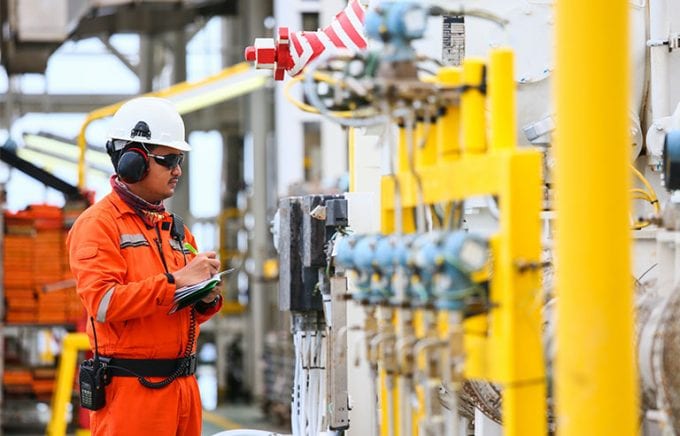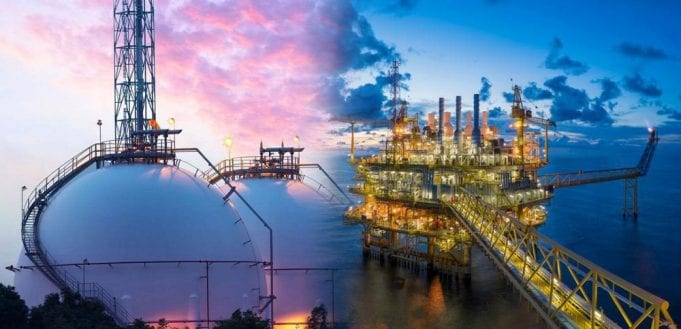Oil and gas industry workers experience some of the lowest incidents of injury at the workplace, according to the US Bureau of Labor Statistics. It wasn’t always that way and the industry has certainly come a long way from its earliest days. Part of the reason for this fairly impressive safety record is that given the dangerous nature of chemicals and equipment in the industry, anything going wrong can have catastrophic results, not just for workers and company equipment, but also on surrounding communities and the environment.
If there’s an industry that can afford nothing more than zero safety incidents, it’s oil and gas. Nevertheless, workplace accidents still occur. The following are a number of tips to help oil and gas businesses prevent them and keep their workers safe.
1. Collaborate with Local Emergency Response

When a workplace accident occurs, speed is of the essence. Emergency responders, as well as the company’s own safety and health teams, must work together to contain and resolve emergencies quickly and successfully.
Ergo, establish a strong working relationship with local emergency response agencies. Develop a consistent procedure for communicating an incident to external response teams. Invite emergency responders for a tour of your site. Have a conversation with them on the key safety and health hazards on-site and how best you can work with one other to improve overall safety.
2. Develop a Safety Program that Fosters Cohesion
Safety is most easily achieved when there’s an atmosphere of communication, cohesion, collaboration, and mutual respect. Internal conflict and competition nurture the kind of tension, confusion, dysfunction, and anger that would inadvertently trigger a deadly incident.
Your company’s safety program should encourage workers to get acquainted with one another. It should adopt a personal, team-based approach to tackling emerging safety challenges. Workers must understand that a safety program is only as effective as the weakest link. According to saferack.com, there must be aware that adhering to safety procedures is not just for their individual protection but also that of their colleagues.
3. Monitor Work Culture and Mental State

You should never cut corners when it comes to safety. One of the biggest risk factors in workplace safety is the work culture and mental state of employees. Keep an eye out for any age-old testosterone-driven tough-guy demeanor that is often associated with oil and gas industry workers, especially those in the field.
Such a work culture can be detrimental to any efforts toward promoting an open, transparent and safety-conscious environment. It may cause workers to internalize their feelings of stress, exhaustion, and lack of knowledge until it’s too late.
Instead, inculcate a safety-centric culture where workers don’t feel it’s ‘weak’ or beneath them to ask colleagues or vendors for help and advice, admit mistakes and obey rules.
4. Familiarize Workers with Worksites
Before a new worker is released to their role, they should be taken through their work location, what their role entails, the hazards they’ll face and what precautions they must take to ensure their own safety and that of their colleagues.
This new employee orientation is, however, not sufficient. The oil and gas work environment is dynamic. The state of a worksite yesterday may not necessarily be the same as today. So before any work begins, before a new shift takes over or if a safety incident occurs, the site must be inspected thoroughly to ensure it’s in the state needed to foster safety.
5. Constant Housekeeping

Reduce the chances of injurious or fatal accidents by ensuring pathways, floors, and work areas are clear of clutter. Accumulated, uncleared waste can cause trips, falls, and blunt trauma from falling objects.
Clearing waste shouldn’t just be the task of a cleaning department but must be every employee’s responsibility. Workers shouldn’t wait for cleaners to come for the trash but must also, as much as possible, clear the clutter from their work areas.
Install clear signage that leads workers to the safety and emergency equipment they require to quickly respond to an evolving safety incident. Employ the safety equipment from a supplier you trust and that has been proven to endure under pressure.
6. Clear, Unambiguous Visual Communication
Plenty of industrial workplace accidents aren’t because employees are willfully ignorant but rather due to a lack of clarity on what they are expected to do in different situations and spaces. Reduce the risk of confusion and miscommunication by setting up clear, coherent and legible labels and signs that convey safety instructions and potential dangers.
Avoid generic, mass-produced, cookie-cutter signs that may fail to relay the exact message required in a specific scenario. Think through each sign and what message you want to put across and, where need be, have custom signs for specific sites, situations, and work crews.
Schedule a regular inspection of signs and replace any that are outdated, illegible or worn out. Floor-based signage (such as directional markings) is especially vulnerable to wear and tear due to foot, wheel and object friction so you may need to have a more frequent inspection of these.
7. Reassess Signage When There’s a Project Change

A project site is hardly static. Whether it’s milder changes like the shift changeovers or something more drastic such as a major amendment in workflows, any change can impact the safety of a site. One change aspect that’s especially crucial is any movement of objects that would render safety signage irrelevant, inaccurate or misleading.
Ergo, at the end of each shift or reorganization, assess the labels and signs to confirm that they are in the correct locations to accurately communicate safety procedures and the presence of hazards.
8. Strict Equipment Maintenance
The average oil and gas industry site is packed with a wide range of complex machinery. It’s not just the giant equipment such as an oil rig but also the electronic systems that ensure everything runs smoothly.
Any equipment failure is not just an impediment to smooth operations but could also introduce risks that endanger the lives of workers. You can greatly reduce the risk of a catastrophic accident by ensuring that maintenance schedules and procedures are followed religiously.
9. Continuous Learning

There’s no point at which you can say you have identified and contained all the safety risks at an oil and gas work site. Safety is most effective when it’s constantly improved. Why? First, just because a safety procedure has worked well in the past doesn’t mean that it cannot be improved. Explore ways you can make the process less risky.
Second, the law of unintended consequences would have it that a small change in one process could have safety implications on another process on site. Whenever anything changes on-site, make sure the change management process includes a check for the introduction of new safety problems.
Third, there’s an opportunity to learn from the best practices in other organizations (including competitors) who have found a better way of doing things.
The relentless pressure to bolster efficiency by automating processes and cutting down on the workforce means many oil and gas industry workers have to spend weeks away from home, endure long workdays and greatly exert themselves to work. All this creates an environment where accidents can easily occur.
This reinforces the need for companies in the oil and gas industry to constantly evaluate and improve safety programs in order to protect workers from death and injury. Apply the above tips to make your work environment safe.






